
Many Singaporeans are having questions because of the extended downtime of some government websites on November. Infocomm Development Authority explained that the extension of the downtime...

Increasing Cyber Security
1
SingTel Declares iPhone 5S and...
2
MOH Warns to Limit Outdoor Act...
3Posted by Editor | Comments Off on Less-Known Eating Disorders You Should Be Aware Of
Less-Known Eating Disorders You Should Be Aware Of
Anorexia nervosa, morbid obesity, and bulimia nervosa are not the only documented types of eating disorders. There are other illnesses that need as much attention as these in the face of an overabundance of food and the hundreds of diet and lifestyle fads on the Internet.

• Compulsive Exercising. Known to doctors in Singapore as anorexia athletica, hypergymnasia, and exercise bulimia, this eating disorder is marked by an obsession with keeping fit through excessively exercising. Patients with this illness get to the point when they even injure themselves from working out too much because they no longer allow their bodies enough time to recover in between exercises. If not treated, the person could suffer from various injuries, loss of bone mass, osteoporosis, and other complications.
• Body Dysmorphic Disorder. Most individuals who have an eating disorder may also likely be suffering from body dysmorphic disorder. Some psychologists do not think this is an eating disorder, but is more of a compulsive disorder. A person with this condition also has one of these symptoms: has an imagined or real physical defect, impairment or feeling of distress due to the physical defect or appearance, and the condition cannot be explained by other health problems.

• Muscle Dysmorphic Disorder. Also called bigorexia, this is the opposite of anorexia nervosa because the person is not obsessed about being slim, and instead, is worried about being small and frail. They focus on getting good muscle mass to become bigger, though not necessarily fat, so they would not look skinny.
• Night-Eating Syndrome. While this might not be as bad as other eating disorders, this can cause a lot of health problems because of the unusual practice of eating late in the day or night and skipping breakfast for lack of appetite. However, the person also feels guilty about eating too much the night before.
• Rumination Syndrome. An individual with this condition tends to regurgitate the food back into the mouth, then tries to chew and swallow it again. This act may be involuntary of voluntary, but the person should get help as soon as possible because the lack of nutrients can cause a lot of complications.

• Pica. Most of the patients who suffer from this eating disorder are very young children and some pregnant women. Pica is characterized by the need to consume or a craving for objects that have no nutritional value such as dirt, chalk, clay, and others.
• Orthorexia Nervosa. Psychologists believe that this disorder is becoming more common nowadays due to the rise of diet and lifestyle fads that promise a healthier body. It is not yet officially recognized as an eating disorder, but the lack of knowledge about one’s body, the desire to follow health trends, and the need to show off in social media, has led some people to focus on losing weight by consuming only “healthy” food. While this might not sound alarming, there are people who go to the extreme of avoiding sugar, gluten, and fat altogether even in small amounts.
Read MorePosted by Editor | Comments Off on What is Obsessive-Compulsive Disorder?
What is Obsessive-Compulsive Disorder?
Obsessive-compulsive disorder is a type of anxiety disorder characterized by recurring thoughts that drive a person to do something repetitively. The recurring thoughts become the obsession, while the repetitive acts become the compulsion.
How can obsession and compulsion affect in a person’s quality of life?

When Can Thoughts Become Obsessions?
There are several forms obsession can take. One is the preoccupation of contamination through the contact with germs, chemicals, and other substances that the person thinks will make him/her sick. Some are also afraid of coming into contact with other people whom they might contaminate or might contaminate them.
Obsession can also be in the form of fear of accidentally harming others and oneself. They think that if they fail to perform a ritual or compulsion, like cleaning an object, they will be bringing a disease that might harm them or other people living with them.
Some people also become obsessed with organizing objects in a certain way to produce exactness or symmetry. They will not feel right if they don’t do something exactly as they intended, or they feel that something unfortunate will happen if there is no order. They will also feel safer if they perform the ritual or avoid small mistakes. The person, however, is usually not aware of their obsession.

What are Examples of Compulsions?
Compulsions can also come in many forms, but most of these become rituals that are practiced excessively and are tied up to the obsession/s. The most common forms of compulsions are the following: excessive washing of hands, observing toilet rituals, washing specific parts of the body several times while bathing, rearranging or ordering things, checking things repetitively, mental rituals, excessive counting or touching objects, and cleaning compulsions.
These symptoms can change over time and may manifest as early as childhood. The obsession can change, and the rituals also vary. Most children with OCD also seek approval that they have done something right to feel safe or at ease, and even encourage family members to observe the same rituals.

How is OCD Treated?
The disorder is also misunderstood and is sometimes mislabeled when used on people who just love to keep things neat and orderly. OCD, however, isn’t simply wanting to keep things clean and organized. It is an uncontrolled, excessive behavior that can possibly affect the quality of life of the person and the people around him/her. Whereas cleaning the house can make others without OCD feel happy and accomplished, an individual with this disorder will not feel relieved or happy at all.
Fortunately, there are medications and therapies available to control these obsessions and compulsions. A combination of medication and psychotherapy is recommended for severe cases, but other accompanying disorders also must be treated. Medications recommended for OCD include selective serotonin reuptake inhibitors and serotonin reuptake inhibitors, usually in high dosages for at least 12 weeks.
Psychotherapy may be in the form of cognitive behavior therapy, habit reversal training, and exposure and response prevention.
Read MorePosted by Editor | Comments Off on Can Retinoblastoma be Treated?
Can Retinoblastoma be Treated?
Although retinoblastoma is a rare malignant cancer, it mostly affects children all over the world. In Singapore, it is the most common type of eye cancer, which accounts for half of such cases according to a study in 2000.
How Does It Start?
Like any type of cancer, the location of the cancer cells is important in the treatment approach. The location will also determine the likelihood of saving the person’s vision. Retinoblastoma can affect one or both eyes, but it rarely spreads from the eyes to other body parts. The illness affects children younger than 2 years because there is a fault in the process of eye formation while the baby is still in the womb. Retinoblasts or cells that are found during the formation of the eyes, do not mature into retinal cells, and instead keep dividing and growing uncontrollably. If not treated, the tumor can fill the eyeball, causing pressure, pain, and loss of vision.

Is it Related to Other Cancers?
Retinoblastoma begins in the retina, but the child can also be affected with another eye cancer or melanoma. This is rare, but the treatment approach will also be different if the child has other conditions that need to be addressed. The second most common eye cancer usually associated with retinoblastoma is medulloepithelioma, which begins in the eye’s ciliary body. Retinoblastoma can be inherited by the child and it has been found that the abnormality is associated with the mutation in the retinoblastoma gene, which can also develop sporadically.

How is it Treated?
There is no one treatment for retinoblastoma, because it must be approached based on its location, type, and the side effects. Most doctors recommend the usual treatments for most types of cancer such as cryotherapy, chemotherapy, thermotherapy, radiation therapy, surgery, targeted therapy, and stem cell rescue. A child with retinoblastoma will need a team of specialists who will make sure that the side effects of the treatments are minimized. There is also a risk of late side effects that will most likely affect the child as he/she grows up, such as; vision and hearing problems, memory and learning problems, and second cancers.
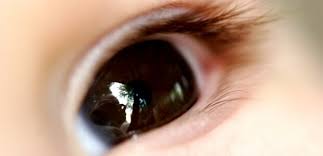
Can the Eye be Saved?
If the specialists can still save the eye, the person might have to go through systemic chemotherapy or an external-beam radiation therapy. If both eyes are affected, there might be different treatment approaches for each eye depending on the size of the tumor and the likelihood of saving each eye.
What is Enucleation?
One of the treatments for retinoblastoma is enucleation or surgery of the eye that aims to remove the affected eye and parts of the optic nerve. This is recommended if there is a suspicion that the caner cells have spread to other parts of the body or if the individual will most likely lose his/her sight. If the tumor is very large and the patient does not respond to other types of treatment, enucleation is also an option.
Posted by Editor | Comments Off on What are Childhood Cancers?
What are Childhood Cancers?
Perhaps most of the cancer-related health cases you have seen in media were about adults, but cancer can also affect children and even newborns. Childhood cancer be difficult and complicated to treat, but there are successful stories of survivors who made it past their treatments.
As a parent, you should be aware of the types of cancer that affect children, such as the following:

• Leukemia. This is perhaps the most common childhood cancer not just in Singapore but in most parts of the world. Leukemia among children is not easy to detect, unless it is an acute leukemia which develops suddenly. The following symptoms might show up gradually: bleeding and bruising even with a minor injury; recurring stomachache; difficulty breathing or wheezing and coughing; swelling in the arms, neck, collarbone and groin; frequent bacterial and viral infections; anemia; and frequent pain the joints and bones.
• Neuroblastoma. This type of cancer usually develops after childbirth and affects the adrenal glands. Symptoms include stomachaches, changes in the appetite, weakness in the legs and a formation of a hard mass in the neck that isn’t painful.
• Retinoblastoma. The malignant tumor starts in the retina and can potentially cause blindness of not treated early. Retinoblastoma is asymptomatic, but the parents might notice that the pupil becomes white when light is shone on the eyes.

• Lymphomas. As the name implies, lymphomas affect the lymphatic system and cause the lymph nodes to enlarge. Lymphomas can either be Hodgkin or non-Hodgkin in variety, with the former having a higher survival rate than the latter. Look for the following symptoms: swollen lymph nodes in the groin/armpits/chest, chest pain, fatigue, night sweats, weight loss, fever, abdominal pain, severe itching, and sensitivity to alcohol.
• Wilms Tumor. Also known as a type of kidney cancer or nephroblastoma, it usually affects just one kidney although two kidneys are not rare. Symptoms might not be noticeable, and they can vary among children, but you should look out for the following: abdominal mass, pain, and swelling; blood in the urine; constipation; nausea and vomiting; fever; hypertension; and shortness of breath.
• Brain and Spinal Cord Tumors. The symptoms vary among affected children, that is why it’s important to get an early diagnosis. Look out for the following: recurring morning headache and nausea; problems in speech, vision, hearing, balance, and walking; unusual sleepiness; seizures; increase in head size; back pain and pain in the arms and legs; changes in the bowel movements; difficulty urinating; and leg weakness.

• Bone Cancer. Two most common types of bone cancer, osteosarcoma and Ewing’s sarcoma, affect children. Symptoms include bone and/or joint pain, swelling, stiffness, and tenderness; lump on a bone; weak bones and frequent fractures; anemia; fatigue; difficulty moving; and weight loss.
• Rhabdomyosarcoma. This is a type of soft tissue sarcoma that affects the fibrous tissue or the muscles, usually in the bladder, head or neck, uterus, vagina, and testes. Some affected children also have tumors in the limbs, abdominal wall, and the chest. Symptoms include blockage and discharges in the throat and nose, swollen eye, abdominal pain, constipation, and blood in urine.
Read MorePosted by Editor | Comments Off on 4 Signs You Should Replace Your Old Plumbing
4 Signs You Should Replace Your Old Plumbing

When it comes to plumbing works, your home has its own way to letting you know that something is going wrong. A good rule of thumb: use your senses. Observing, listening and smelling are the best ways to prevent potential disasters before they become a major problem. Here are some of the signs that say you need to get your home plumbing works checked and replaced with new lines by a plumbing contractor in Singapore.
The Water is No Longer Clear
Water is supposed to clean you up; therefore, it is supposed to be crystal clear. When you open the faucet and see that the water looks rusty or any color but clear, this raises a red flag.
Water that comes out from your faucet with a hint of brown or rust is usually a sign of pipe corrosion. As the water flows through the plumbing pipes, it can corrode, pick up and carry rut residues in the pipes.
Not only is this water unsafe for household use, rusty pipes are prone to mineral deposits that slowly build up within the pipe, too. When the build up gets too thick, this can cause clogs and increases chances of burst pipes—due to the strong pressure from the lack of open space for the water to freely flow. Before the need to fix burst water tap arises, call a professional plumber to have your pipes checked.

The Water Smells Funky
Does the water from the faucet have a rusty or foul odor? Well it shouldn’t be. Water shouldn’t have a smell; and when it starts to smell funky, it could be a sign of bacteria build up in the pipe. This means that some part of your home plumbing needs to be checked by a plumbing services expert.
You Start to Notice Mold and Water Damage
Broken faucets and leaky pipes can happen every now and then. As long as you get them fixed by a professional plumber immediately, you should be fine. But also remember that not all leaks are easily detectable. Some leaks can be behind walls, which can go silent and undetected. The only time you start to notice these leaks is when you discover a spot of damp moldy wall. Once you see such sign, call 24 hours plumber right away to have it checked and repaired right away before the damage aggravates.

You Hear Bubbling or Gurgling Sound
First off, know that it is normal for some drains, like the dishwasher, laundry machines, bath tub and anything that drains large amount of water, to produce bubbling sounds. However, when this happens to other drain points that only drains low amount of water, it could mean that the line is backed up or is constricted. Again, have it checked by plumbing services in Singapore to detect the problem in its earliest stage possible.
Your homes plumbing works may not age gracefully, especially if it doesn’t have enough maintenance from a reliable plumber. Give your waterways the TLC it deserves and call a professional plumber for maintenance check up and repair.
Read MorePosted by Editor | Comments Off on Eight Glasses of Water a Day
Eight Glasses of Water a Day
People do not usually give importance to hydration but what they do not realize is that without proper hydration, we are slowly leading our body to decay. Hydration is very important for a lot of things. One of the things hydration is useful for is circulation. Without proper hydration, the circulation of our blood within our body would not be normal. The circulation of our blood is very important if we are to function to our full potential. People do not realize that trying to function at their best without actually preparing for it would definitely not work.
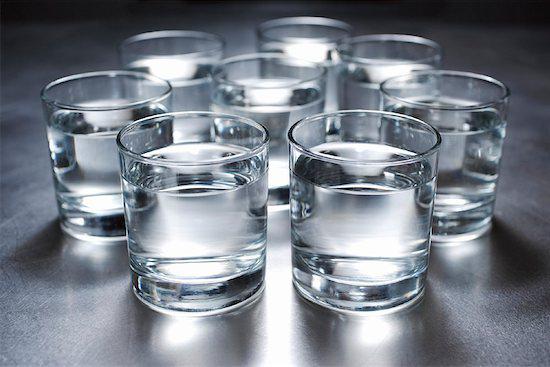
Our body slowly gets weaker the more dehydrated we become. It may be hard to keep yourself regularly hydrated all throughout your day but water isn’t that hard to find. In fact, finding water around is really easy. All of the restaurants sell them, there are countless stores that all sell water and it is honestly not that expensive.
For those who do not enjoy water as a liquid, there are actually substitutes for that. There are certain fruits with a high water content which is good enough for you to be hydrated. Watermelon is a good fruit to keep you hydrated. If you enjoy the taste of watermelon, eating some throughout the day would be a great way to not just keep yourself hydrated but also a great fruit to snack on.

Drinking the right amount of water at the right time also helps your digestion and bowel movement. Keeping your body functioning at a healthy rate is very important. Your digestive system ban be a little tricky because it is not always about what you eat but also when you eat and the condition of your body while you are eating. A good digestive system is a great way for you to be able to enjoy your life to the fullest since you will be able to not only eat but also enjoy the nutrients you get from your food all throughout the day.
Now, is eight glasses a day really necessary? Well, yes! It is the perfect amount of water we should be drinking everyday. Drinking two glasses of water per meal and one glass of water in between breakfast and lunch and another one glass of water during the afternoon. Easy right? Well, you can drink more water than that. There’s actually no such thing as too much water. Unless of course you aren’t able to get healthy food together with your water.

Staying hydrated throughout your life is a great way for you to enjoy it. Don’t forget to drink water every now and then.
Read MorePosted by Editor | Comments Off on The Importance of Salt in the Kitchen
The Importance of Salt in the Kitchen
Salt is a great spice for you to be able to add such a wonderful taste to whatever you are cooking. Not only is salt cheap but it is also very useful. The good thing about salt is that you can find it just about anywhere. From your local grocery stores to your actual supermarket. Now why is salt so necessary? Why is salt one of the most used ingredient in almost every dish? What does salt do to make our food taste better?
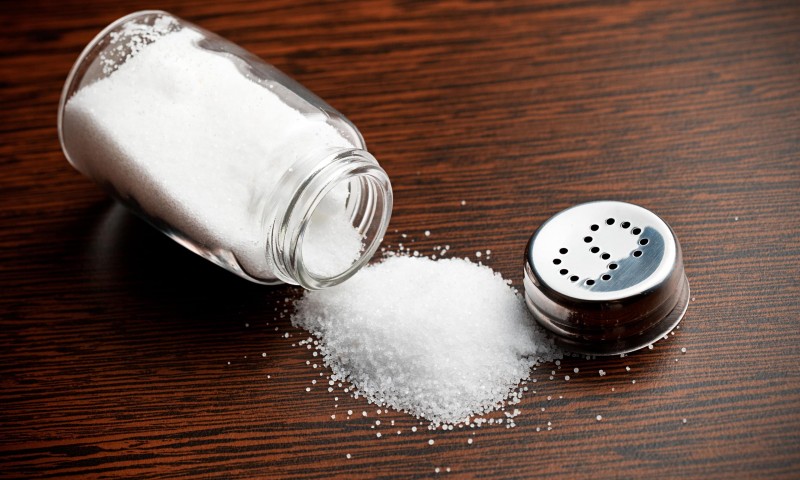
Let’s talk about the answers one at a time. Most of the food we eat and the ingredients we use can be very acidic. For example, lemon or vinegar usually adds a great deal of acid towards your dish. What happens when our dish is very acidic? Well, since our taste buds and pallets can only take such an amount of acid, our food would start to taste horrible. Now, what does an acidic dish taste like? Well, it could taste really sour or basically very different from your regular dish.
Now, what is the use of salt? Well, salt balances out the acid. Salt evens out the taste by countering the acidic taste. Salt is also a great flavoring. Using salt to season you meat can really bring out an amazing taste to your basic meat. Salt is usually met up with pepper and it blends just perfectly.
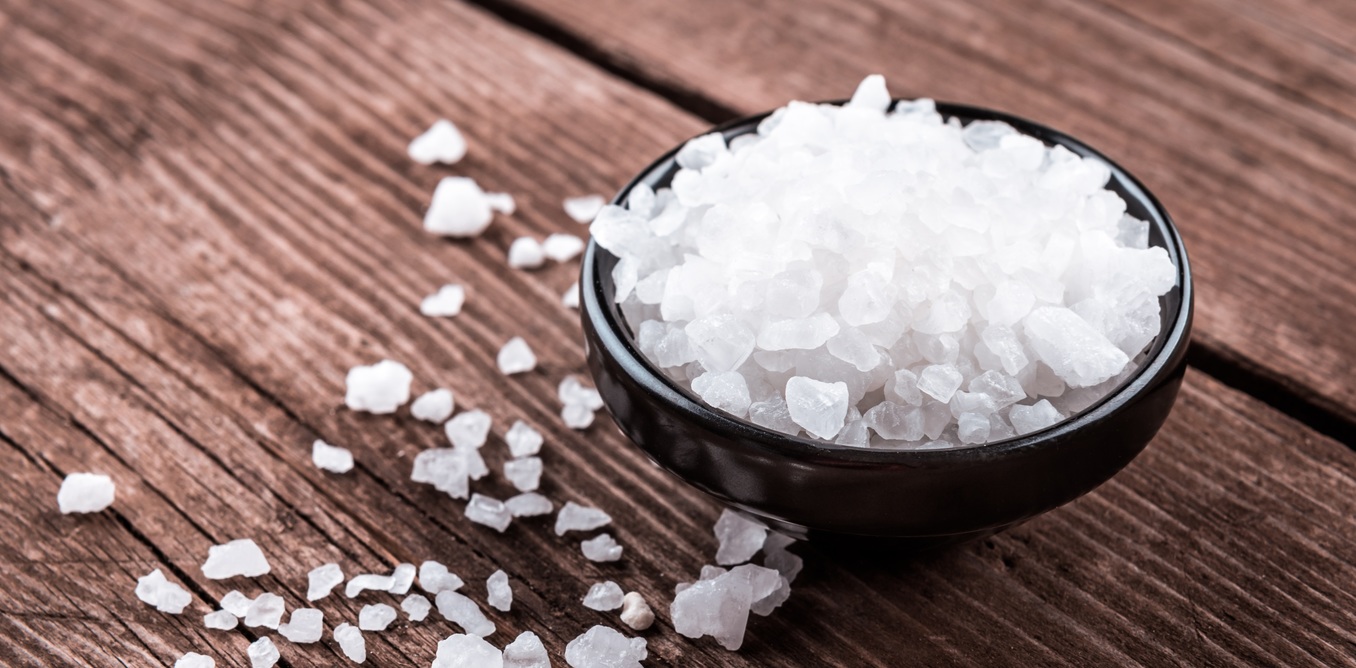
There are so many ways for you to put salt into good use, you can even use it to prolong the shelf life of your meat. Back in the day when they didn’t have much preservatives around, they would usually put salt around the piece of meat for it to preserve either for transportation or for use later on. When you are putting salt into good use, do not overdo it. Salt may help improve the taste of your food, but it can also ruin it if you use too much.
There are many different kinds of salt and many different size of granules and each of them have a different taste and effect on your food. Having bigger granules of salt usually focuses the taste on a certain part rather than being evenly spread out but the more skilled you become in cooking, the easier it is for you to play around with the different types of salt.
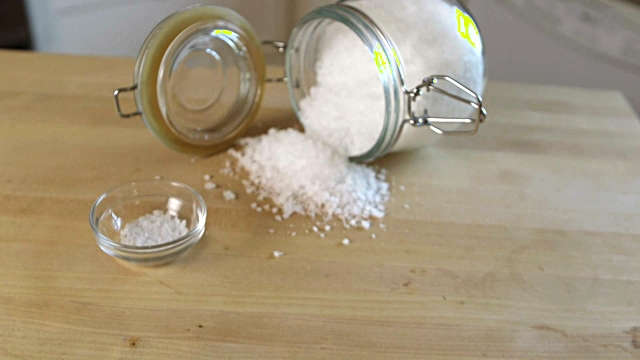
Salt is a must have in the kitchen and is something you should definitely buy in a bundle. Salt has a really long shelf life so you wouldn’t even have to worry of spoiling since salt also helps preserve meat in itself. Make sure you do not contaminate your salt for it to stay clean and tasty.
Read More


